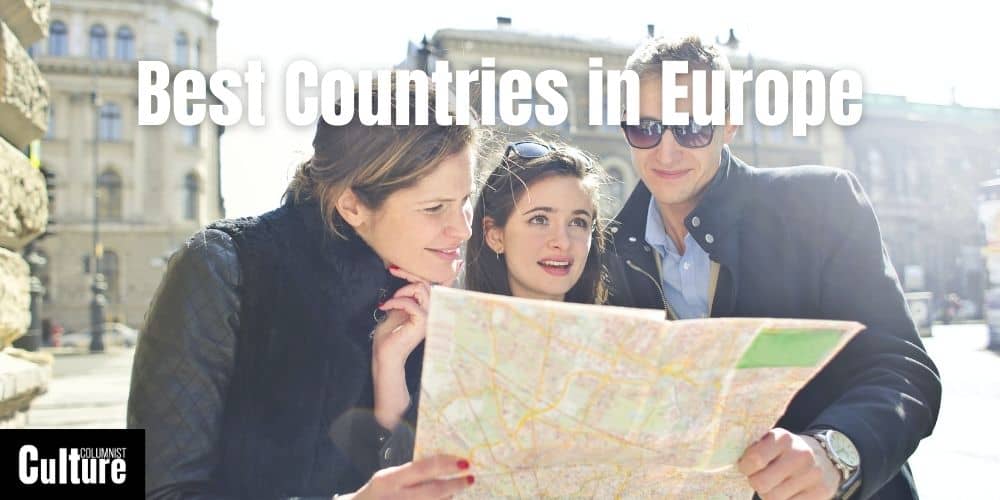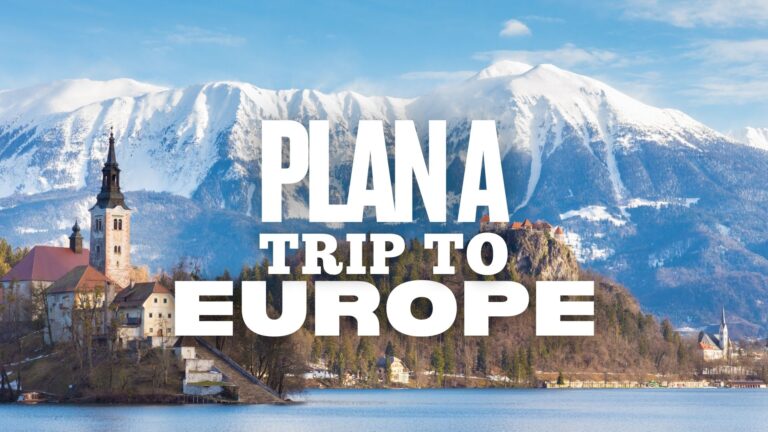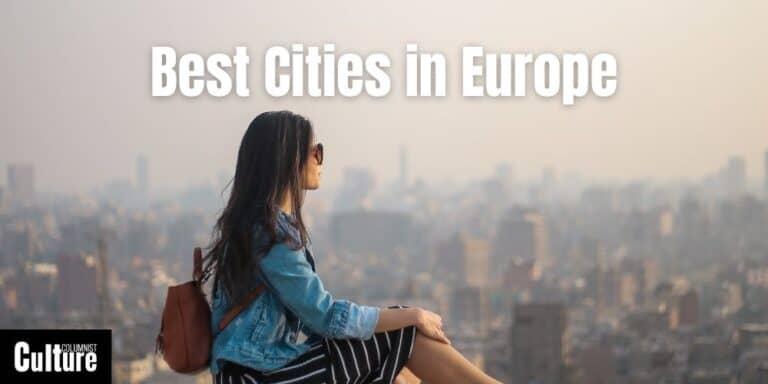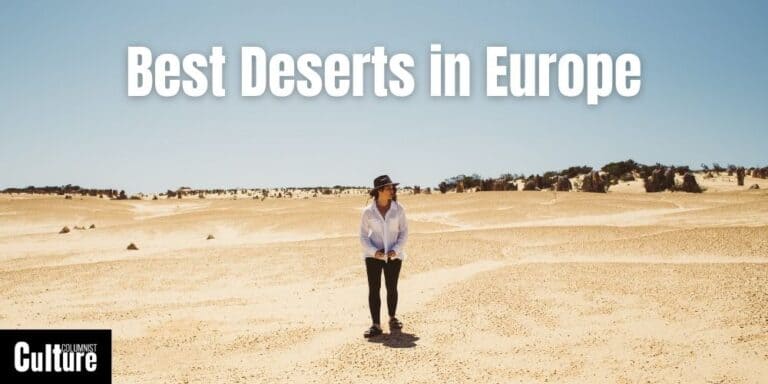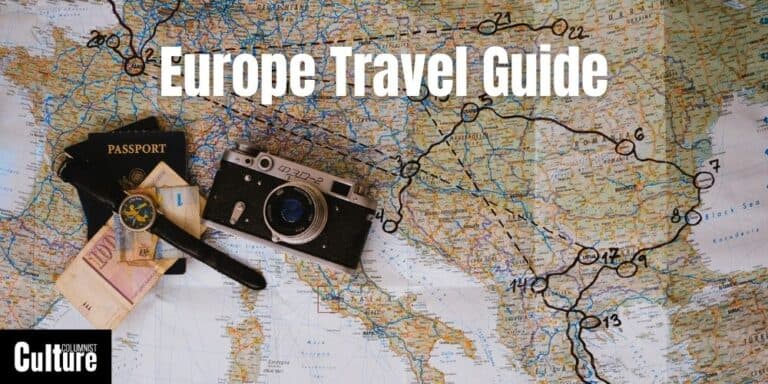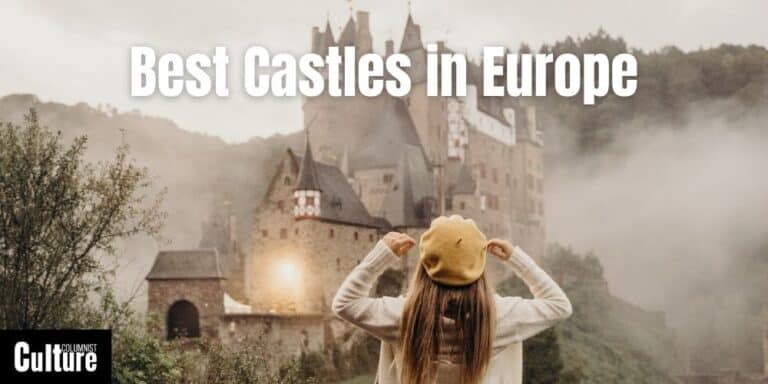Best Countries To Visit In Europe
Europe is a traveler’s paradise, offering a rich tapestry of cultures, landscapes, and experiences within relatively close proximity. Whether you’re drawn to historical landmarks, vibrant cities, or natural wonders, Europe has something for every type of traveler.
With 44 countries to choose from, deciding which to visit can be a daunting task. Different countries excel at different offerings: some are known for their beaches, others for their museums, culinary scenes, or outdoor activities.
Some of the most popular countries for tourism include France, known for its cuisine and art; Italy, celebrated for its history and coastlines; and Switzerland, renowned for its natural beauty and outdoor activities. Costs can vary significantly, from budget options like Bulgaria and Romania to more expensive destinations like Norway and Denmark.
Whether you’re a young backpacker looking for adventure, a couple seeking a romantic getaway, or a family aiming for a memorable holiday, this list showcases the best countries in Europe to visit, each offering a unique blend of attractions and experiences to match diverse travel goals.
France
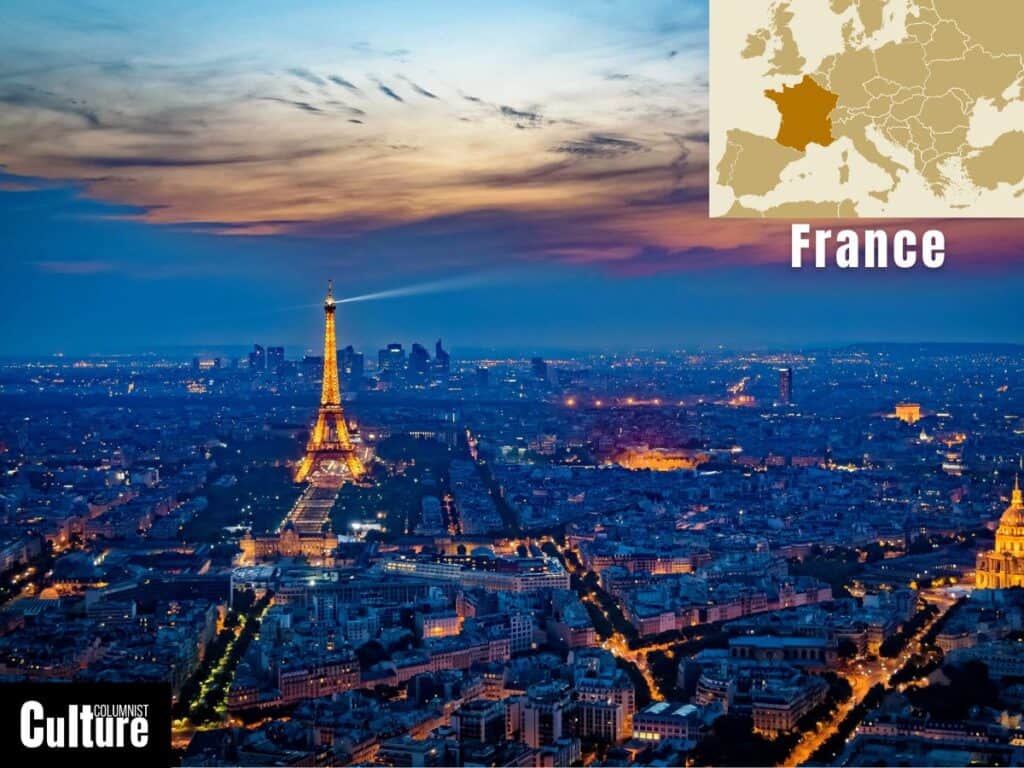
France is located in Western Europe and is often dubbed the ‘country of love,’ renowned for its romantic ambiance, world-class cuisine, and excellent wines. It is bordered by the Atlantic Ocean and several other European countries, including Germany, Spain, Italy, Belgium, Switzerland, Luxembourg, and Andorra.
It boasts a wide range of landscapes, from the snowy peaks of the Alps to the lush vineyards of Bordeaux and the sun-soaked beaches of the French Riviera. The country has several major rivers, with the Seine being the most notable as it winds through Paris, making it possible to see the country’s many picturesque villages by cruise or boat tour.
As the epicenter of the Renaissance, Enlightenment, and several revolutions, France has a rich heritage and cultural past. It is home to world-class museums like the Louvre and architectural marvels like Notre Dame. The Eiffel Tower in Paris stands as a symbol of love and architectural wonder.
France is celebrated for its cuisine, in particular for bread, cheese, and wine. Freshly baked croissants, pain au chocolat, and French baguettes are breakfast staples. French cheeses, including Camembert, Brie, and Roquefort, are essential components of the country’s famous “Apéro” (pre-dinner snack), while regions like Bordeaux, Champagne, and Burgundy produce world-renowned wines.
Germany
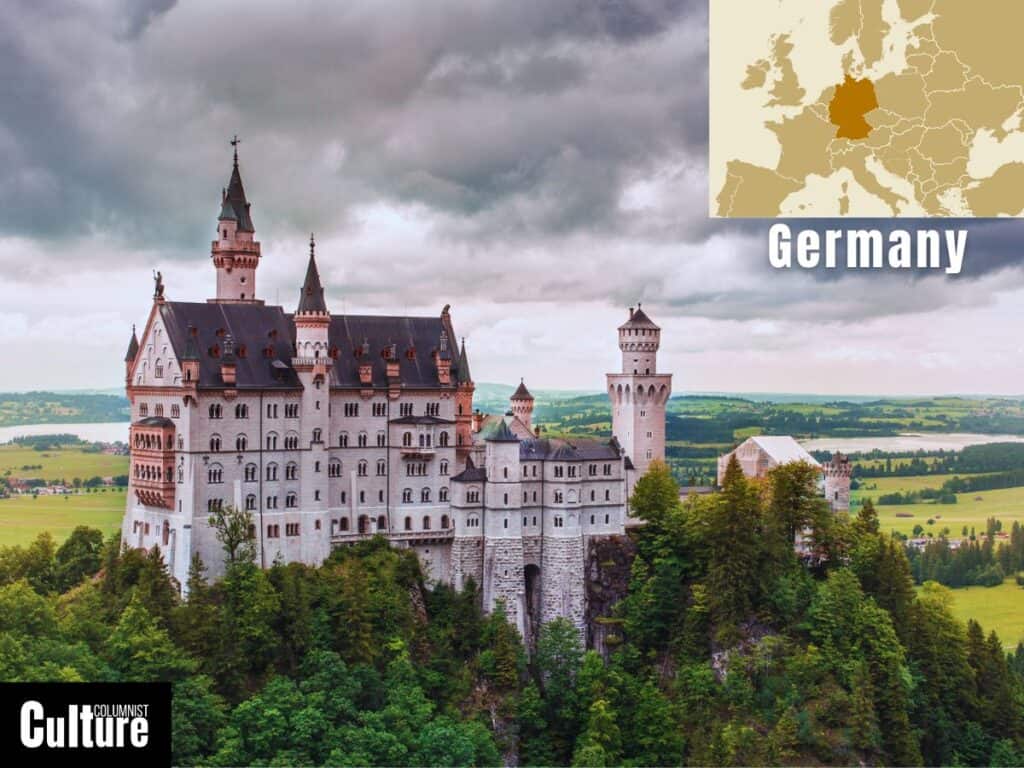
Germany is situated in Central Europe and is known for its history, technological innovations, and cultural diversity. It shares its borders with Denmark to the north, Poland and the Czech Republic to the east, Austria and Switzerland to the south, and France, Luxembourg, Belgium, and the Netherlands to the west.
Germany’s landscape is varied, with the rugged Alps in the south and the North Sea and Baltic Sea coasts in the north. The Rhine and Danube rivers run through the country, creating breathtaking scenic cruise routes. The Black Forest is a natural marvel, known for its dense, evergreen forests and picturesque villages. Germany is steeped in history, being home to medieval castles like Neuschwanstein and key historical sites related to World War II and the Berlin Wall.
Germany is famous for its contributions to classical music, with composers like Beethoven and Bach born here. The country is also home to world-class museums such as the Pergamon Museum in Berlin, while events like Oktoberfest in Munich and the Christmas markets across various cities celebrate traditional German culture.
When it comes to cuisine, Germany is known for sausages (wurst), pretzels and beer. The country takes its beer seriously; there are approximately 1,300 breweries in Germany, producing everything from pale ales to dark lagers. German wine, particularly from the Moselle and Rhine regions, also has a good reputation.
The Netherlands
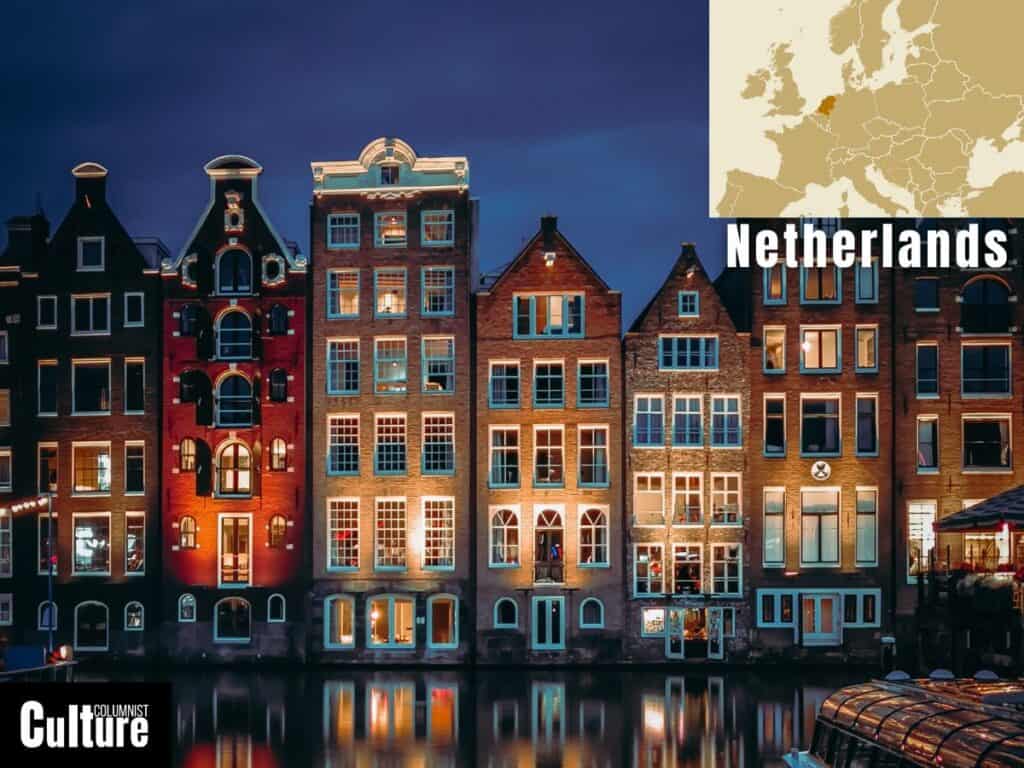
The Netherlands is located in Northwestern Europe and is renowned for its flat landscapes crisscrossed by canals, tulip fields, and iconic windmills. It is bordered by Germany to the east, Belgium to the south, and the North Sea to the northwest.
The country’s geography is largely flat, with about 26% of its land lying below sea level. This has led to an intricate system of dikes, sea walls, and canals for water management. The country is known for its maritime past during the Dutch Golden Age and historic ports like Amsterdam and Rotterdam. The Keukenhof Gardens, where millions of tulips bloom each spring, are a significant natural attraction.
The Netherlands has a rich artistic history, being the birthplace of painters like Rembrandt and Van Gogh. The Rijksmuseum in Amsterdam and the Van Gogh Museum are must-visits for art enthusiasts, while events like King’s Day offer a glimpse into local traditions.
Dutch cuisine features a variety of dairy products, especially cheeses. The Dutch have been making cheese since 800 B.C. and are best known for varieties like Gouda and Edam. The Netherlands is also famous for its stroopwafels, herring fish, ‘Rookworst’ smoked sausage and, of course, Heineken beer.
Switzerland
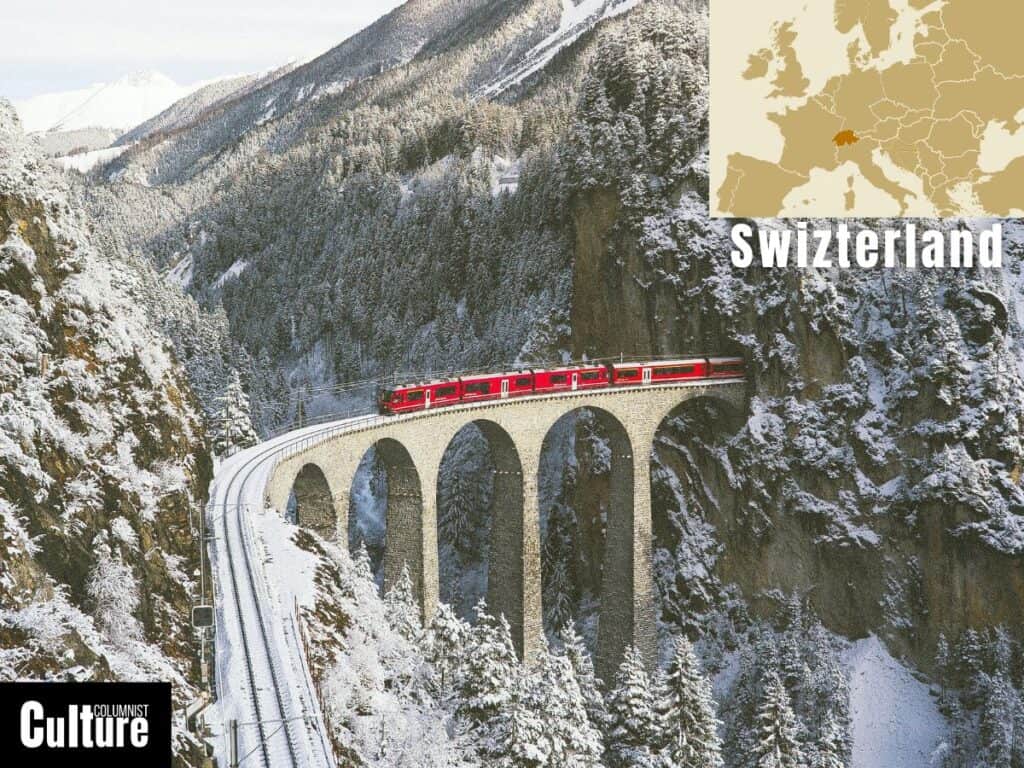
Switzerland is located in Central Europe and is famed for its political neutrality, precision engineering, and breathtaking natural landscapes. It is landlocked and bordered by Italy to the south, France to the west, Germany to the north, and Austria and Liechtenstein to the east.
The Swiss landscape is primarily mountainous, with the Alps covering about 60% of its territory. The country is renowned for its skiing, snowboarding, mountain trails and rock climbing in areas like the Matterhorn and Jungfrau. There are also several lakes dotted throughout the country of various sizes, such as Lake Geneva, Lake Lucerne and Lake Constance, offering scenic boat tours.
Switzerland is known for its long-standing policy of neutrality, which has made cities like Geneva hubs for international diplomacy and humanitarian organizations. The country is also a European hub for art and luxury, with Zurich and Basel hosting prestigious art fairs and museums like the Kunsthaus Zürich and the Patek Philippe museum in Geneva.
When it comes to cuisine, Swiss chocolate stands out as a favorite among many visitors, with Toblerone being one of the most iconic, with its pointy shape being inspired by the Matterhorn. The country is also famous for its cheese, which is an essential ingredient in national dishes like fondue and raclette.
Italy
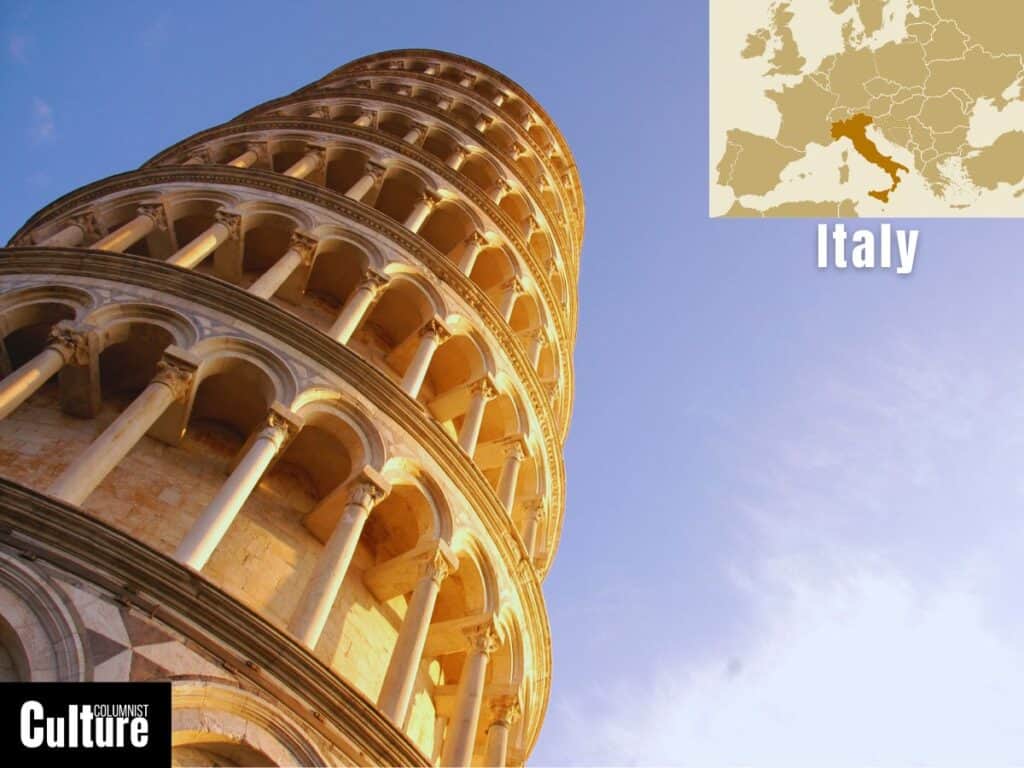
Italy is located in southern Europe and is famous for its rich history, art, and gastronomy. It is bordered by France to the northwest, Switzerland and Austria to the north, and Slovenia to the northeast. The country also has extensive coastlines along the Mediterranean Sea.
Italy offers a diverse range of landscapes, from the Alpine regions in the north to the volcanic activity of Mount Vesuvius in the south. The country’s extensive coastline and islands, like Sicily and Sardinia, are famous for their beautiful beaches.
Italy is home to numerous UNESCO World Heritage Sites, including the Colosseum in Rome, the Leaning Tower of Pisa, and the canals of Venice. Its history dates back to the Roman Empire and Renaissance periods, which have left an important mark on Western civilization.
Italy is a cornerstone of Western art and culture, boasting renowned figures like Leonardo da Vinci, Michelangelo, and Verdi. The Uffizi Gallery in Florence and the Vatican Museums in Rome are among the world’s most visited art museums.
Italian cuisine is equally iconic, with regional dishes like Neapolitan pizza, Bolognese pasta, and risottos enjoying global fame. Wines from regions like Tuscany and Veneto are highly prized, and Italian espresso is a staple in coffee culture worldwide.
Spain
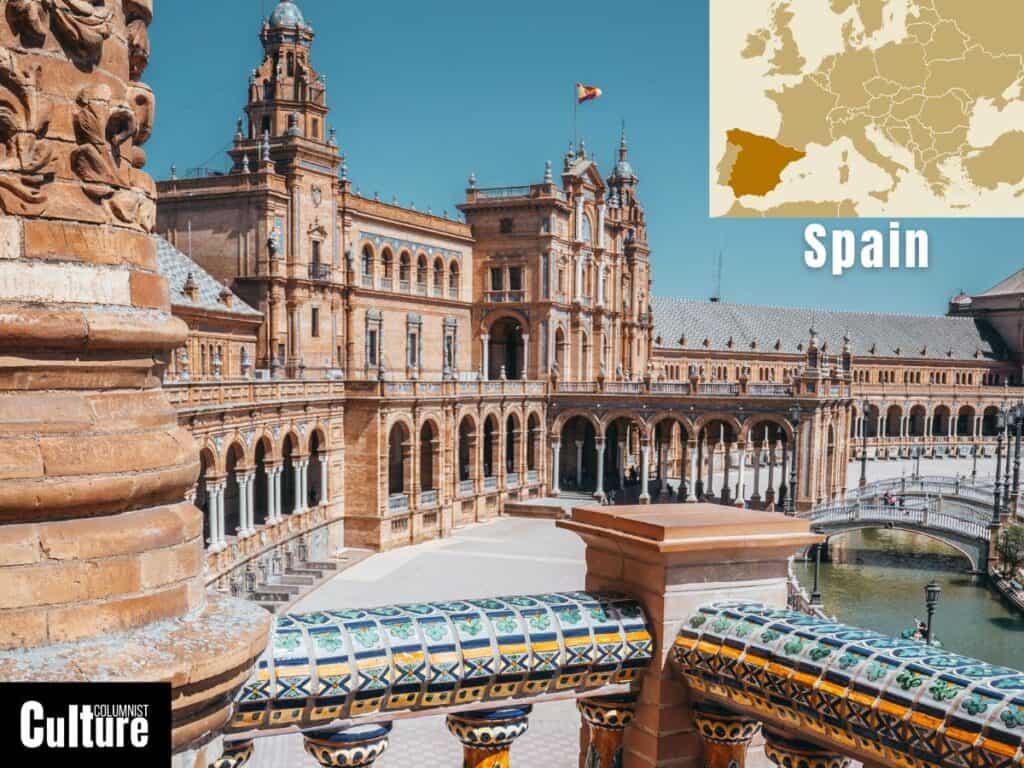
Spain is situated in Southwestern Europe on the Iberian Peninsula and is known for its diverse landscapes, historical landmarks, and vibrant culture. It shares borders with France to the northeast and Portugal to the west, while also being surrounded by the Atlantic Ocean and Mediterranean Sea.
Spain’s geographical features range from the Pyrenees mountains bordering France to the sun-kissed beaches of the Costa del Sol. The country’s diverse landscapes also include arid plains such as the Tabernas Desert in Andalucia and lush meadows of the Vilasinde valley.
Historic sites such as the Alhambra in Granada, the Sagrada Familia in Barcelona, and the ancient aqueduct in Segovia showcase Spain’s rich history, which is a unique mix of Moorish, Roman, and Catholic influences.
Spain is renowned for its contributions to art, with artists like Francisco Goya and Pablo Picasso and prominent art museums such as Prado Museum in Madrid being recognised worldwide. Flamenco dancing and bullfighting are also distinctly Spanish traditions but are considered art forms in themselves and are deeply rooted in the country’s history and culture.
Spain is famous for its cuisine, featuring dishes like paella, gazpacho, and churros. In Spain, it’s common to go “tapeo,” which means hopping from one tapas bar to another, enjoying a small dish and a drink at each stop. The country is also one of the world’s largest producers of wine, including the unique sherry wines from Jerez.
Greece
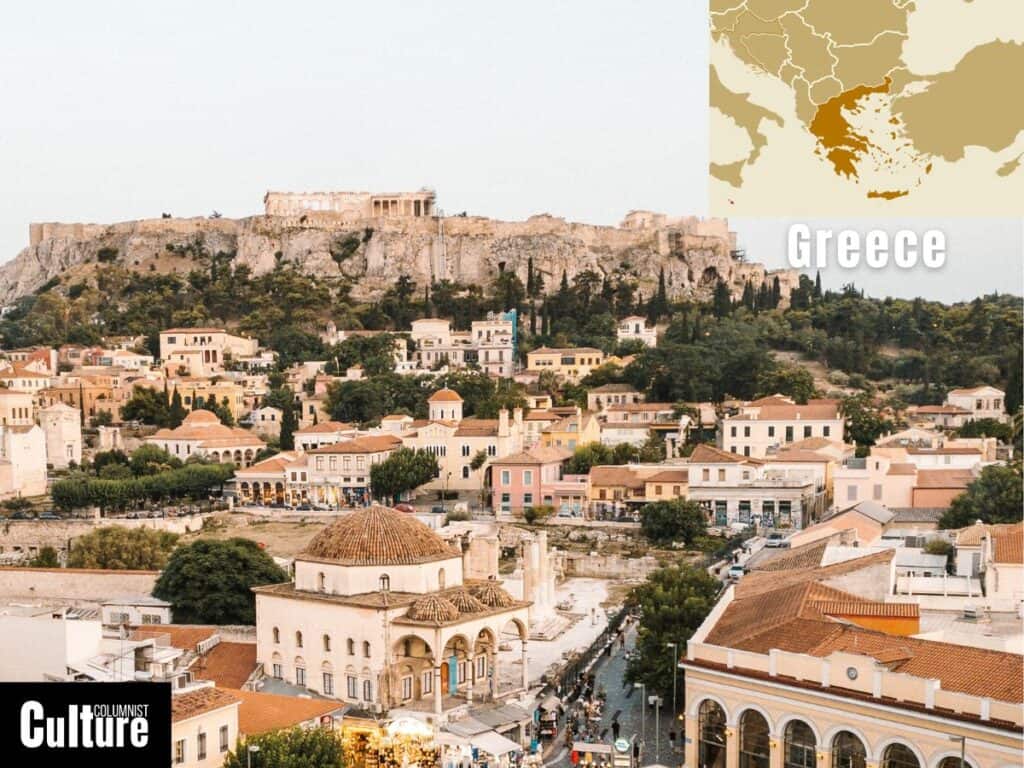
Greece is located in Southeastern Europe and is celebrated for its ancient history, stunning islands, and contributions to Western philosophy and democracy. It is bordered by Albania, North Macedonia, Bulgaria, and Turkey and is surrounded by the Aegean, Ionian, and Mediterranean Seas.
Greece is mostly mountainous, with a vast coastline dotted by numerous islands such as Santorini, Mykonos, and Crete. The country’s historic sites like the Parthenon in Athens, the Palace of Knossos in Crete, and the Temple of Apollo at Delphi are significant landmarks that reflect its ancient history, dating back to the classical era and beyond.
Greek culture has profoundly influenced Western civilization, particularly in the fields of philosophy, science, and the arts. The country has significant contributions to literature, drama, and music, with ancient Greek plays still being performed today, particularly in the ancient theatre of Epidaurus.
Greek cuisine is famous for its Mediterranean diet, with many dishes incorporating fresh vegetables, fish and olive oil. You will never walk away from a Greek meal feeling hungry; they are hearty and delicious, with moussaka, gyros, and pastistio becoming global favorites. Before you dig in, remember to start with a little ouzo, an anise-flavored Greek aperitif.
Portugal
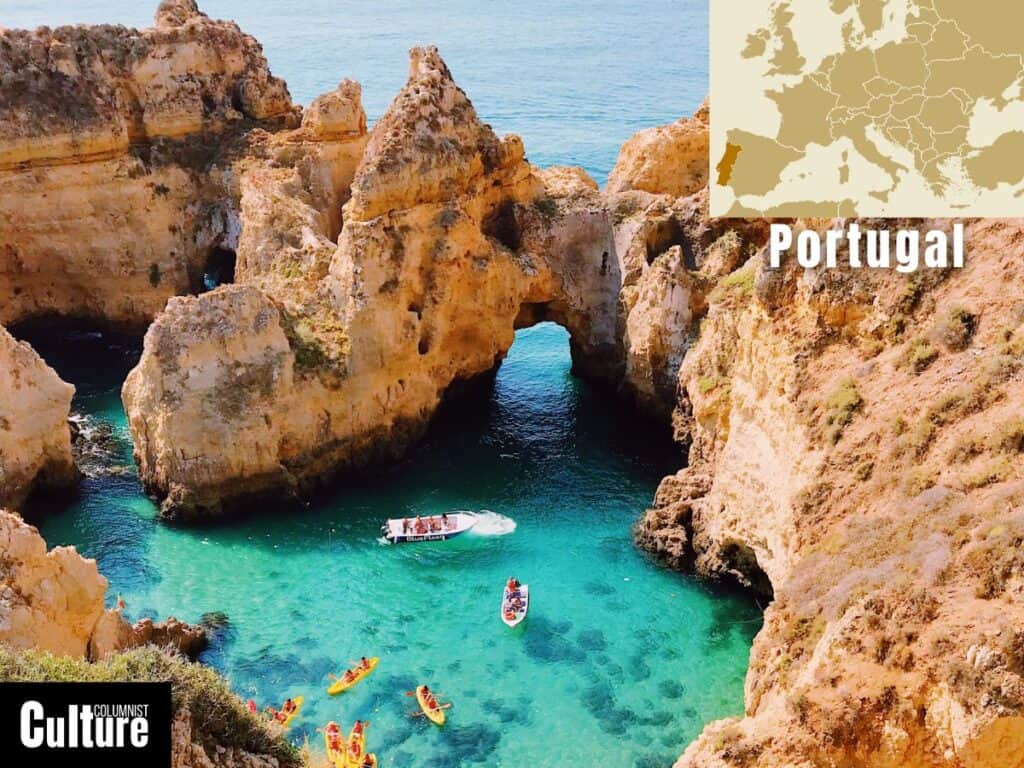
Portugal is located in southwestern Europe on the Iberian Peninsula and is known for its maritime history, picturesque coastlines, and soulful Fado music. It shares its only land border with Spain to the east and north, while the Atlantic Ocean borders the west and south.
Portugal boasts a diverse landscape that includes the lush Azores and Madeira archipelagos in the Atlantic Ocean, rolling plains in the Alentejo, and mountainous areas like the Serra da Estrela. The Douro River Valley, known for its terraced vineyards, is a UNESCO World Heritage Site. Portugal’s history is deeply tied to seafaring and exploration, as showcased by historic sites like the Belém Tower and Jerónimos Monastery in Lisbon.
Portugal has a rich cultural landscape that includes hauntingly beautiful Fado music, traditional Azulejo tilework seen on buildings like the House of Ferreira das Tabuletas in Lisbon’s Chiado neighborhood and the diverse collection of ancient and modern art in the Calouste Gulbenkian Museum in Lisbon.
Portuguese cuisine is known for its seafood dishes, notably bacalhau (salt cod), and pastries like pastéis de nata. In addition to Portugal’s fine dining scene, there are also laid-back restaurants that are equally impressive. Some of these spots, such as Antiga Confeitaria de Belém, have been serving up traditional Portuguese cuisine for generations, honing their recipes to perfection.
Poland
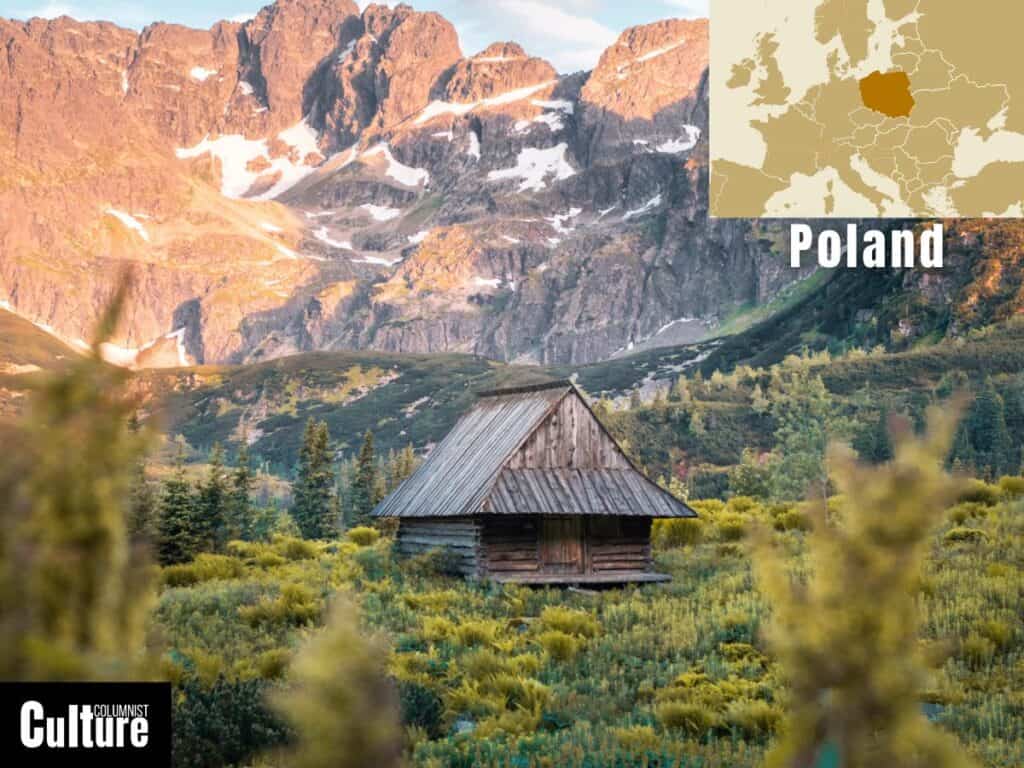
Poland is located in Central Europe and is known for its complex history and natural beauty. It shares borders with Germany to the west, the Czech Republic and Slovakia to the south, Ukraine and Belarus to the east, and Lithuania and the Russian exclave of Kaliningrad to the north.
Poland has a varied landscape, from the sandy beaches along the Baltic Sea to the rugged Tatra Mountains in the south. The country is also home to ancient forests like Białowieża, which is home to Europe’s last bison.
Historically, Poland has experienced numerous shifts in territorial boundaries and governance, with landmarks such as Auschwitz and Warsaw’s Old Town offering a window into its complex past. Historic cities like Kraków, Gdańsk, and Wrocław make for great city destinations, offering a mix of medieval architecture and vibrant cultural scenes.
Poland has made significant contributions to classical music, being the birthplace of famous composer Frédéric Chopin. Polish cuisine is hearty, featuring dishes like pierogi (dumplings), kielbasa (sausage) and zurek, a bread bowl soup soured with fermented rye starter, served with a boiled egg and a spicy white sausage.
Romania
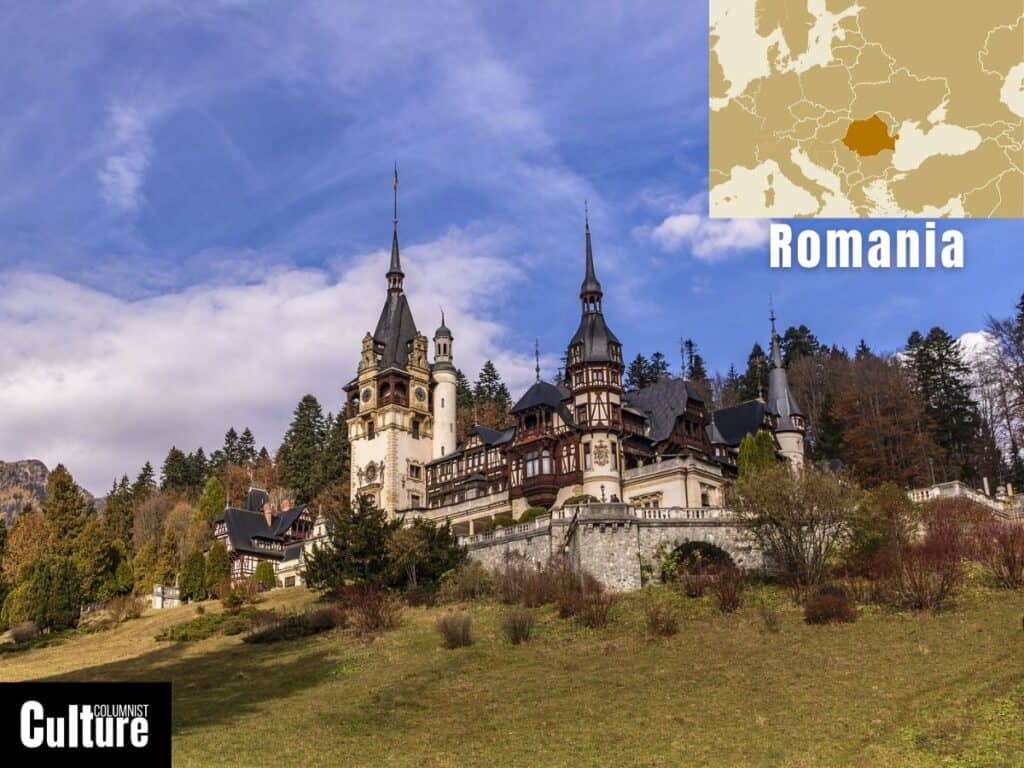
Romania is situated in southeastern Europe and is known for its captivating folklore, Carpathian landscapes, and the legend of Dracula. It is bordered by Ukraine to the north, Moldova to the northeast, Bulgaria to the south, Serbia to the southwest, and Hungary to the west.
Romania’s landscape is diverse, featuring the Carpathian Mountains, the Transylvanian Plateau, and a coastline along the Black Sea. The country is home to one of Europe’s last untouched wilderness areas, the Danube Delta, which is a UNESCO World Heritage Site.
Romania’s history is a blend of different civilizations, including Roman, Ottoman, and Austro-Hungarian influences, which can be seen in sites like Bran Castle and the ancient Dacian fortresses.
Romania has a rich folklore tradition, including the global vampire legend linked to the historical figure Vlad the Impaler, who inspired Bram Stoker’s Dracula. The country is also known for its traditional music, dances like the Hora, and festivals such as Mărțișor, which symbolize the arrival of spring.
Romanian cuisine features a mix of flavors and dishes, including mămăligă (cornmeal), mici (grilled sausages), and mititei (minced meat rolls). Tuică, a strong plum brandy, is a traditional Romanian drink, while many microbreweries and breweries are emerging with a wide range of styles and flavors of craft beers made with local fruits and spices.
Bulgaria
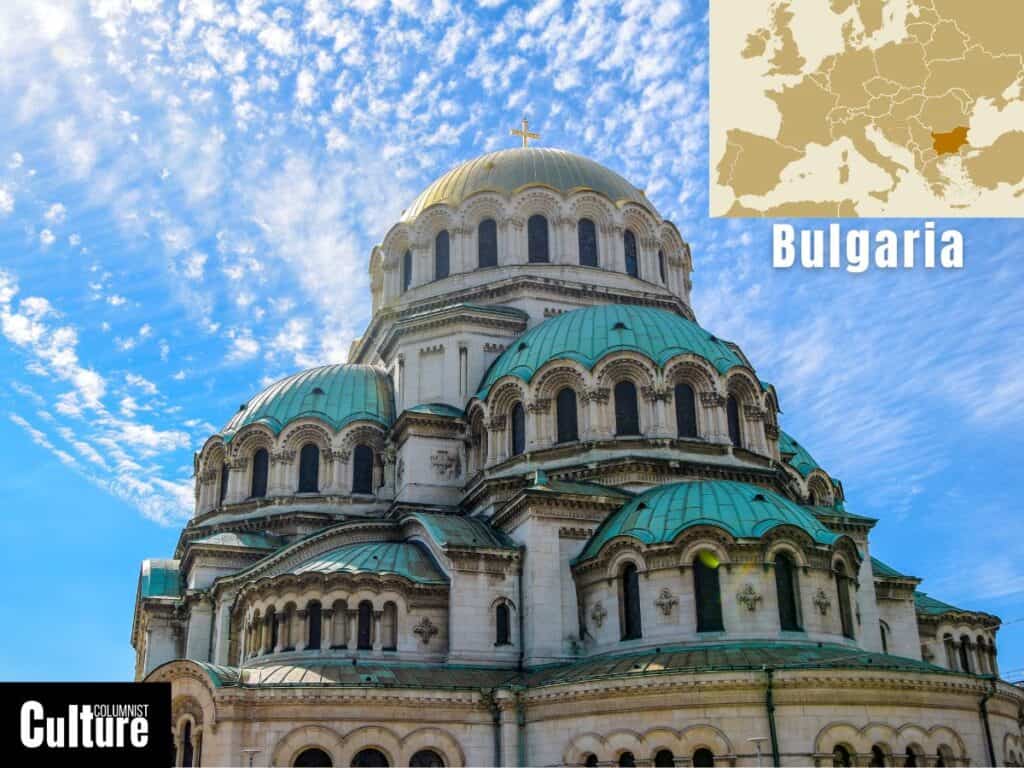
Bulgaria is located in Southeastern Europe and is known for its rich cultural heritage, diverse landscapes, and Orthodox Christian traditions. It is bordered by Romania to the north, Serbia and North Macedonia to the west, Greece and Turkey to the south, and the Black Sea to the east.
Bulgaria offers a variety of landscapes, ranging from the mountainous terrains of the Balkans to the sandy beaches along the Black Sea. The country has several national parks, including Rila and Pirin, which are home to interesting species such as the Brown Bear, Wolf, Wood Grouse, Hazel Hen and Black Woodpecker.
Bulgaria is one of the oldest countries in Europe, with a history that includes Thracian, Roman, and Ottoman influences, which can be seen in sites like the ancient city of Plovdiv and the Rila Monastery. The country is home to the Alexander Nevsky Cathedral in Sofia, one of the largest Orthodox cathedrals in the world.
Bulgaria has a rich folk tradition, with dances like the horo and music featuring instruments such as the gadulka. Their cuisine is famous for dishes like kavarma (a slow-cooked stew) and banitsa (a cheese-filled pastry), while traditional drinks include rakia, a fruit brandy, and ayran, a yogurt-based beverage.
Sweden
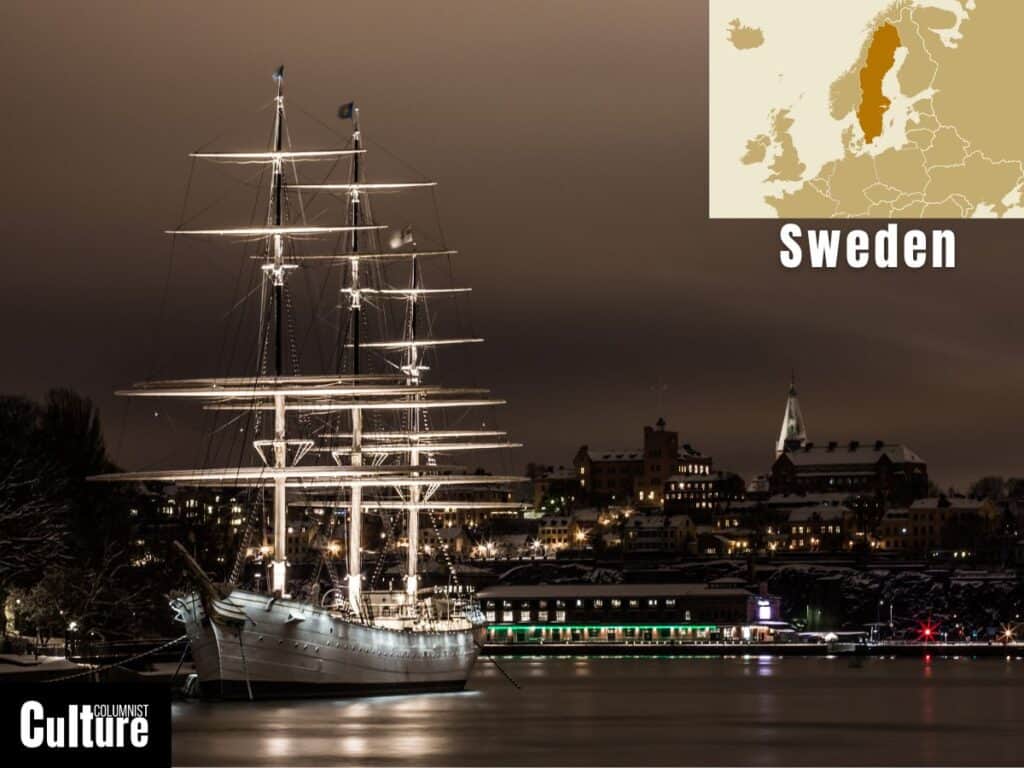
Sweden is located in Northern Europe and is famous for its high standard of living, technological innovation, and social equality. It shares borders with Norway to the west and Finland to the northeast, and is bounded by the Baltic Sea to the east and the North Sea to the southwest.
Sweden’s landscape is marked by extensive forests, numerous lakes, and a long coastline. The country is home to natural attractions like the Icehotel in Jukkasjärvi and the Northern Lights visible in the Lapland region.
The country was once a major European power during the 17th century, which can be seen through their historical landmarks like the Drottningholm Palace and the ancient runestones, fascinating remnants of the Viking Age. These large, often upright stones often feature inscriptions of the Runic alphabet, the ancient script of the Vikings.
Swedish cuisine is known for its seafood, particularly herring, and dishes like meatballs and smörgåsbord, a buffet-style meal, while the country has a thriving coffee culture known as “fika,” where it’s also common to enjoy traditional sweet pastries known as fikabröd.
Norway
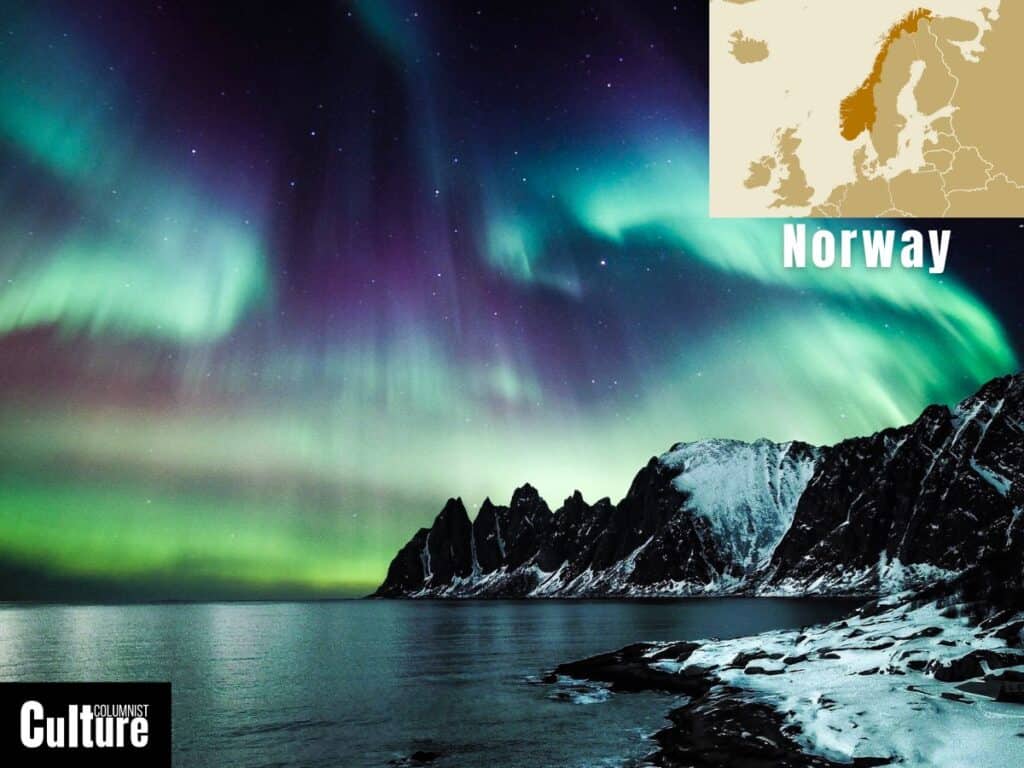
Norway is situated in Northern Europe and is renowned for its stunning fjords, high standard of living, and outdoor lifestyle. It is bordered by Sweden to the east, Finland to the northeast, and Denmark across the sea to the south.
Norway is known for its dramatic natural landscapes, including fjords like Geirangerfjord and Nærøyfjord, both UNESCO World Heritage Sites. The country also has a rugged coastline and offers opportunities to witness the Northern Lights in the far north. Historically, Norway is known for its Viking heritage, which can be seen through artefacts and historical sites such as the Viking Ship Museum in Oslo.
Norway is home to some of Europe’s oldest wooden buildings, including its famous stave churches, which showcase intricate medieval woodworking methods. Landmarks like the Atlantic Road, the Trollstigen Visitor Centre, the Oslo Opera House and the Arctic Circle’s Svart Hotel have become global tourist attractions, elevating Norway’s status as an architectural hub.
Norwegian cuisine features a lot of seafood, especially salmon and cod, along with traditional dishes like raspeballer (potato dumplings) and klippfisk (dried fish). Drinks such as aquavit, a flavored spirit, and coffee are staples in Norwegian social settings.
Ireland
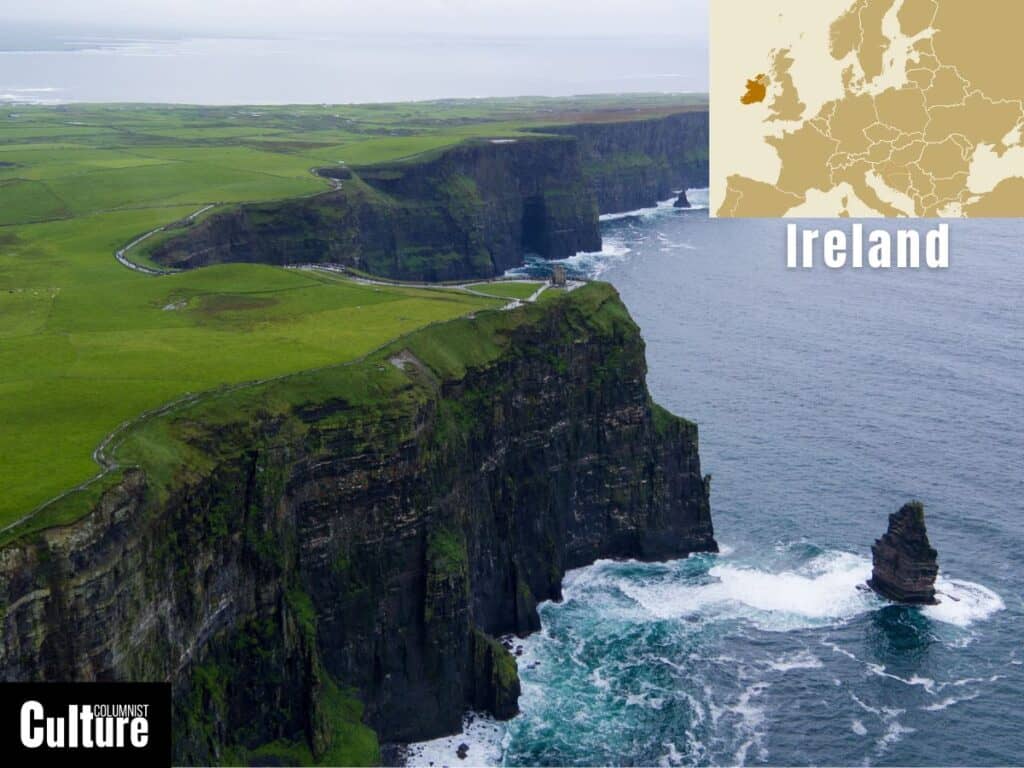
Ireland is located in Northwestern Europe and is famed for its landscapes, countless shades of green and friendly culture. It is bordered by Northern Ireland (part of the United Kingdom) to the north and the Atlantic Ocean to the west, south, and east.
Ireland is often referred to as the “Emerald Isle” due to its lush, green countryside. It has a wide range of natural attractions, from the dramatic Cliffs of Moher to the tranquil lakes of Killarney National Park. The River Shannon, the longest river in Ireland, offers opportunities for boating and fishing.
Ireland’s history is rich with landmarks like the ancient Newgrange monument and the Rock of Cashel, testifying to its ancient Celtic heritage. Irish culture is steeped in music, folklore, and literature, with famous exports including traditional Irish music, the dance form Riverdance, and literary giants like James Joyce, Oscar Wilde and Samuel Beckett. Major cities like Dublin are home to iconic cultural landmarks, such as Trinity College and its Book of Kells, while the cities of Cork and Waterford showcase Ireland’s Viking past.
Irish cuisine is best known for traditional dishes like Irish stew, soda bread, and a variety of potato-based meals. Drinks like Guinness and Irish whiskey are well recognized and enjoyed all over the world, but they can be experienced authentically with a visit to the distilleries in Dublin.
Denmark
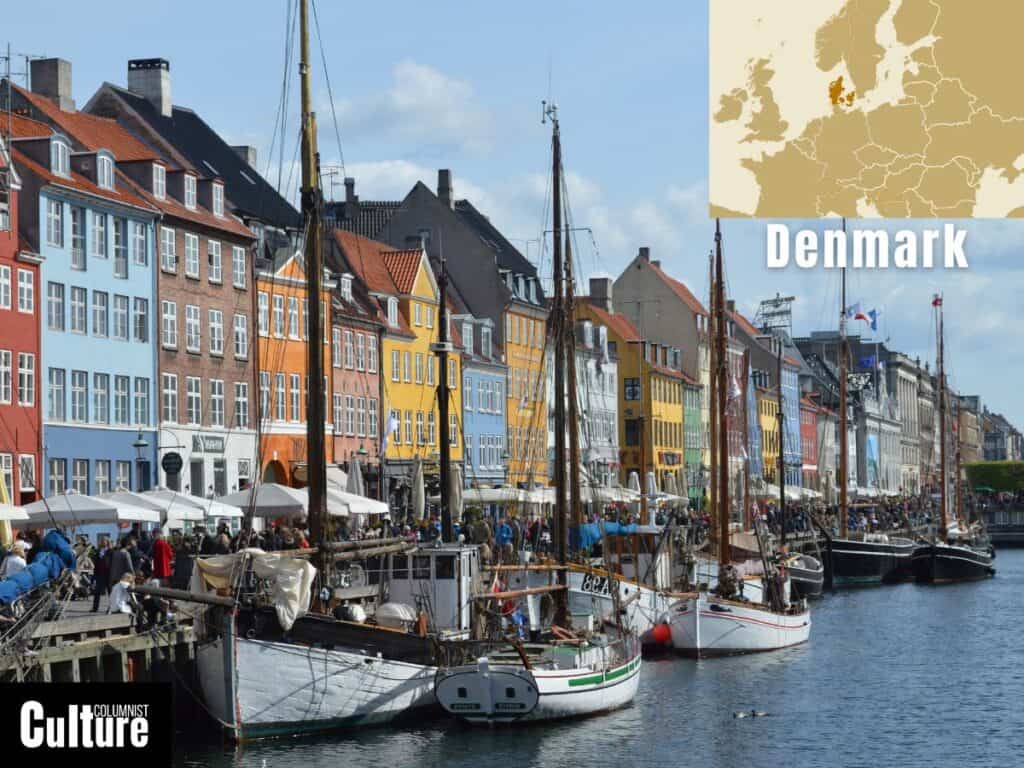
Denmark is situated in Northern Europe, known for its high quality of life, innovative design, and as the birthplace of fairy tales by Hans Christian Andersen. It shares a land border with Germany to the south and is surrounded by the North Sea and the Baltic Sea.
Denmark is characterized by its flat terrain, numerous islands, and long coastline, which make it ideal for cycling and sailing. The country comprises the Jutland Peninsula and over 400 islands, including popular tourist destinations like Bornholm and Funen.
Denmark is another country steeped in Viking history, and this heritage can be explored at attractions such as the National Museum in Copenhagen and the historical site of Jelling. The country is also a leader in sustainable design, as showcased by Copenhagen’s cycling infrastructure, making it a perfect location to explore by bike.
Danish cuisine focuses on high-quality local produce and is internationally recognized through the New Nordic Food movement. Traditional dishes include smørrebrød (open-faced sandwiches) and frikadeller (meatballs), while drinks like akvavit and Carlsberg beer are popular.

